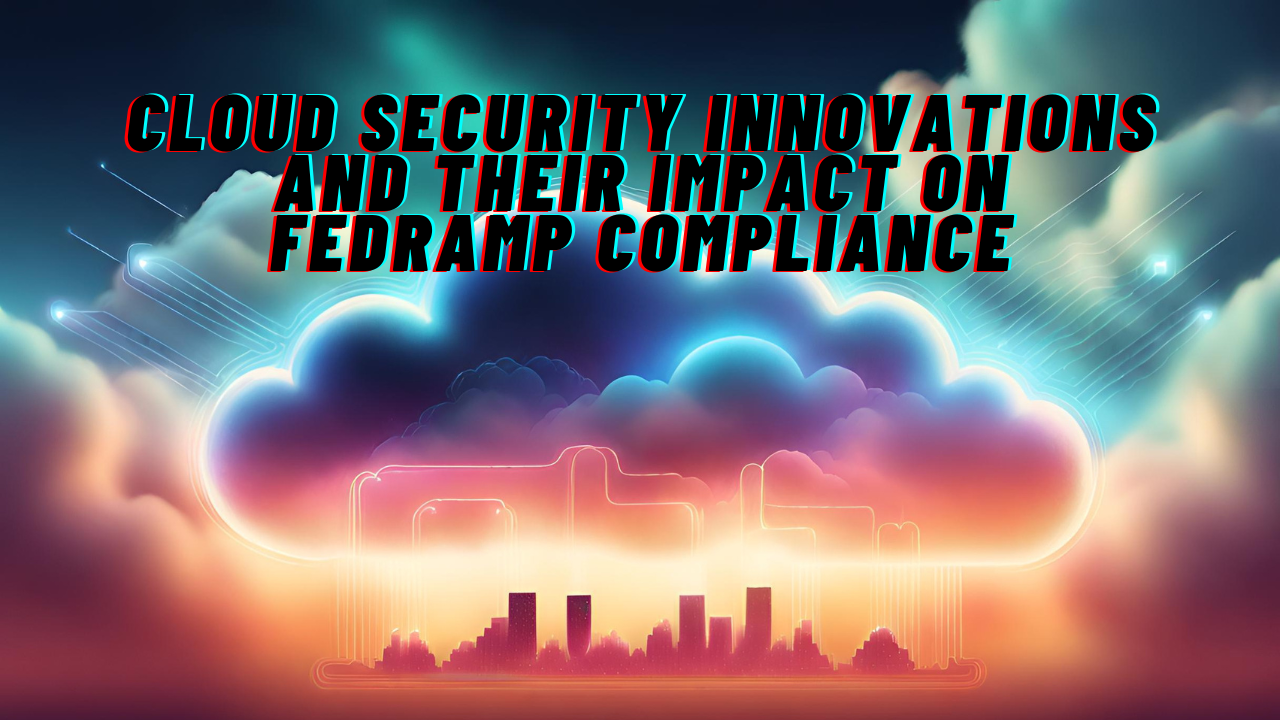In the ever-evolving landscape of information technology, cloud computing has emerged as a transformative force that has revolutionized the way organizations store, manage, and access their data and applications. However, this digital transformation comes with its own set of challenges, chief among them being security. For federal agencies and government contractors in the United States, compliance with the Federal Risk and Authorization Management Program (FedRAMP) is a critical requirement to ensure the security of data in the cloud.
This article explores the latest innovations in cloud security and how they are influencing and enhancing FedRAMP compliance.
The Significance of FedRAMP Compliance
FedRAMP is a U.S. government-wide program that standardizes the security assessment and authorization process for cloud products and services. It was created to ensure that federal agencies can adopt cloud technologies securely and efficiently while reducing duplicative efforts. FedRAMP compliance is not only a legal requirement but also a testament to an organization’s commitment to safeguarding sensitive government data.
To achieve FedRAMP compliance, cloud service providers (CSPs) must undergo a rigorous assessment process that evaluates their security controls, documentation, and overall security posture. This process involves multiple stakeholders, including the Federal Chief Information Officer (CIO) Council, the National Institute of Standards and Technology (NIST), and the General Services Administration (GSA). FedRAMP compliance demonstrates that a CSP has met stringent security standards and can be trusted to host government data.
Cloud Security Innovations
In recent years, the field of cloud security has witnessed significant advancements driven by the growing demand for more robust and adaptable security solutions. These innovations are not only helping organizations better protect their data but also simplifying the path to FedRAMP compliance.
1. Zero Trust Architecture
Zero Trust Architecture (ZTA) is a security framework that has gained traction in the cloud security landscape. ZTA operates under the principle of “never trust, always verify.” It assumes that no entity, whether inside or outside an organization’s network, can be trusted by default. Instead, ZTA requires continuous authentication and authorization of users and devices, regardless of their location or network environment.
Implementing a Zero Trust approach aligns with many of the security controls outlined in FedRAMP requirements, such as access control and continuous monitoring. By adopting ZTA principles, organizations can enhance their security posture and address FedRAMP mandates more effectively.
2. AI and Machine Learning
Artificial intelligence (AI) and machine learning (ML) have revolutionized threat detection and response in cloud security. These technologies can analyze vast amounts of data in real-time, identifying anomalies and potential threats that might go unnoticed by traditional security tools.
In the context of FedRAMP, AI and ML can play a crucial role in continuous monitoring, helping organizations identify security incidents or vulnerabilities promptly. Predictive analytics powered by AI can also assist in proactive threat mitigation, reducing the risk of data breaches.
3. Container Security
Containerization has become a popular method for deploying and managing cloud applications. Containers offer a lightweight and efficient way to package and isolate applications and their dependencies. However, they also introduce unique security challenges.
Cloud security innovations in the realm of containerization include container security platforms that provide real-time visibility into container activities, vulnerability scanning, and runtime protection. These solutions ensure that containers meet FedRAMP’s security requirements while allowing for agile and scalable application deployment.
4. DevSecOps Integration
DevSecOps is a cultural and technical movement that integrates security into the software development and deployment process. It emphasizes collaboration between development, security, and operations teams to ensure security is an integral part of the software development lifecycle.
For organizations seeking FedRAMP compliance, adopting DevSecOps practices can streamline the implementation of security controls. Automated security testing and continuous integration and delivery pipelines can help ensure that security is not an afterthought but a fundamental aspect of cloud deployments.
5. Multi-Cloud Security
Many organizations operate in multi-cloud environments, using multiple cloud service providers to meet their needs. While this approach offers flexibility and redundancy, it also introduces complexity in terms of security management.
In response to this challenge, multi-cloud security solutions have emerged. These tools provide centralized visibility and control over security policies across different cloud platforms. FedRAMP compliance in a multi-cloud environment becomes more manageable with such innovations, as they enable consistent security enforcement and monitoring.
Impact on FedRAMP Compliance
The aforementioned cloud security innovations are not only beneficial for enhancing overall security but also have a direct impact on the ease and effectiveness of achieving and maintaining FedRAMP compliance.
1. Streamlined Auditing and Reporting
One of the challenges in FedRAMP compliance is the extensive auditing and reporting requirements. Innovations such as AI and machine learning can significantly reduce the manual effort required for compliance audits. These technologies can continuously monitor and report on security controls, providing real-time insights into compliance status and potential issues.
2. Faster Authorization Processes
FedRAMP authorization can be a time-consuming process. Implementing Zero Trust Architecture, container security, and DevSecOps practices can expedite the authorization timeline. These security approaches demonstrate a proactive commitment to security, which can expedite the trust-building process with federal agencies.
3. Better Risk Management
Cloud security innovations enable organizations to better manage risks associated with FedRAMP compliance. Advanced threat detection, anomaly detection, and automated incident response reduce the likelihood of security incidents that could jeopardize compliance. Additionally, multi-cloud security solutions provide a unified view of risk across different cloud providers, aiding in risk assessment and mitigation.
4. Enhanced Data Protection
Data security is a top priority for FedRAMP compliance. Container security and DevSecOps practices ensure that applications and data are protected from the outset. This proactive approach reduces the risk of data breaches and demonstrates a commitment to data protection, a key aspect of FedRAMP requirements.
Conclusion
Cloud security innovations are transforming the way organizations approach FedRAMP compliance. By embracing Zero Trust Architecture, AI and machine learning, container security, DevSecOps practices, and multi-cloud security solutions, organizations can enhance their security posture while simplifying the path to FedRAMP authorization.
The convergence of these innovations not only strengthens security but also streamlines auditing and reporting, accelerates authorization processes, improves risk management, and enhances data protection. As the cloud security landscape continues to evolve, federal agencies and government contractors must stay agile and proactive in adopting these innovations to meet the ever-changing challenges of securing government data in the cloud. FedRAMP compliance is not just a regulatory requirement; it is a reflection of an organization’s commitment to safeguarding sensitive information in an increasingly digital world.
About Author
My name is Manpreet and I am the Content Manager at Scrut Automation, one of the leading risk observability and compliance automation SaaS platforms. I make a living creating content regarding cybersecurity and information security.
Manpreet can be reached online at manpreet@scrut.io and at our company website https://www.scrut.io/

